We know, at first glance a cemetery may not be one of the places you first think of as a cultural destination, but many are home to an important artistic wealth. Pantheons, sculptures, tombstones… can be considered true works of art that, being related to death, sometimes do not receive the attention they deserve. In addition, many of the cemeteries of Aragon offer interesting lessons of medieval or contemporary history of the community. Let us take you through some of the cemeteries in Aragon that are of special interest for necro-tourism.
Torrero Cemetery (Zaragoza)
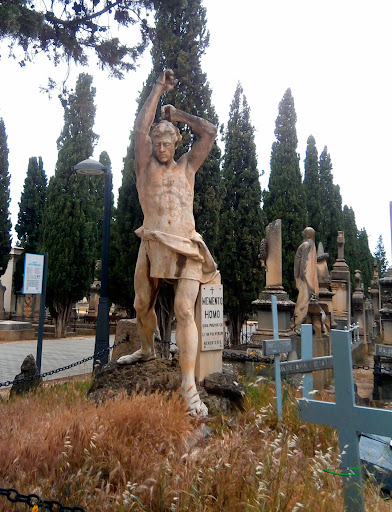
We start with the largest necropolis in Aragon, which for some years now has been opening up to the city as an urban space that hosts different activities. One example is the cultural walks to get to know some of the sculptural works it contains, by sculptors such as Ponzano or Palao, or mausoleums designed by architects such as Yarza, Albiñana or Magdalena. In fact, in 2019, this place won the award for the most beautiful cemetery in Spain.
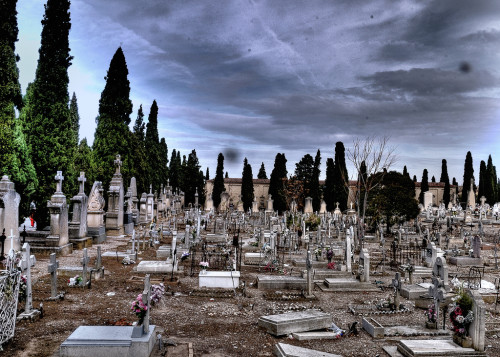
We invite you to take a leisurely stroll through the cemetery (during the day, of course), especially in the old part, to enjoy these works, pieces that mix the religious with the sinister and include a marble relief of the Virgin of Pilar in the pantheon of the Cabildo Metropolitano, a gloomy lady flanked by skeletons in that of Ginés and Ginés or even an Egyptian sphinx in that of the Herrero family.
If you do not dare to take this walk alone do not worry, because associations like Gozarte organize guided tours to this place, some of them dramatized, so that you know the history of the place from the hand of those who “live” there. In addition, one of them may inspire you to win a prize, because the cemetery of Torrero organizes every year epitaphs, photography and stories contests around it.
Fuentespalda cemetery (Teruel)
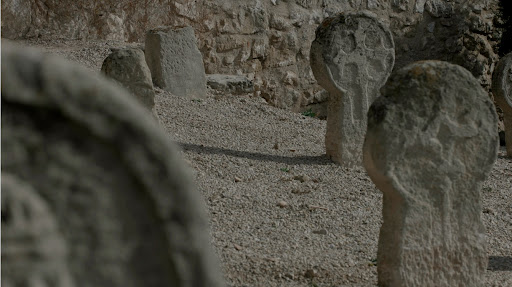
Cemetery of Fuentespalda, in Teruel. (Source: rutadecementerios.com)
This place is a kind of history, because here a medieval funerary space has been built thanks to the recreations of stelae (small stone monuments in the form of a tombstone or pedestal), from between the thirteenth and fifteenth centuries. They are not original pieces, in fact they were built about two hundred years ago, in the image and likeness of those used in medieval burials. They were cleaned and rehabilitated to be exhibited not in a museum, but in the place for which they were intended: a cemetery. In this way, this cemetery is also claimed as a cultural space and earns a place in our list of must-see cemeteries in Aragon.
Church of San Antonio de Padua (Zaragoza)

This church is usually known as ‘the church of the Italians’, and this has a lot to do with the subject we are talking about, the necropolis and cemeteries of Aragon. This is so because in the early 40’s of the last century, the Italian government commissioned Zaragoza to build a cemetery in honor of the soldiers of the transalpine country who had lost their lives in the Spanish Civil War.
This cemetery was installed in the great tower that forms part of the structure of the church, whose interior is a huge pantheon full of tombstones and mementos of almost 3,000 soldiers, which can be visited today.
La Cartuja Baja Cemetery (Zaragoza)
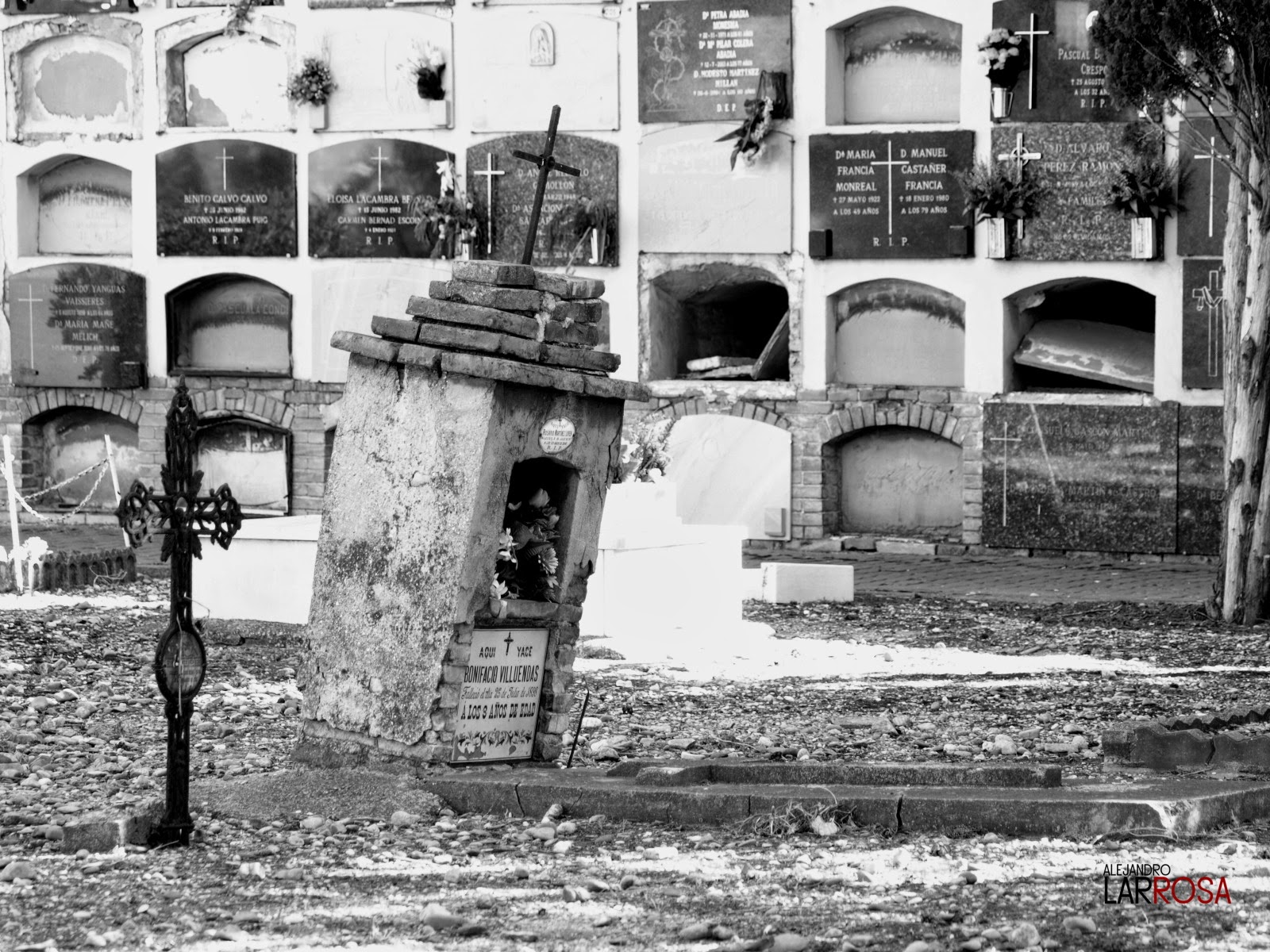
If before we told you about the largest cemetery in Zaragoza, now we present you the oldest one. Yes, this cemetery, which was originally associated with the hospital Nuestra Señora de Gracia in the Aragonese capital, was built in 1791, forty years before Torrero. In addition, it has another peculiarity: it is integrated in an industrial estate, with the gate practically next to the road.
As it was the only cemetery in Zaragoza for a time, illustrious figures of the time, such as Doctor Cerrada or Lasierra Purroy, were buried here. Many of these illustrious tombs are grouped in the Panteón de la Beneficiencia, which presides over the space. If you want to discover the history of this place, we recommend that you sign up for one of the guided tours that are organized to learn about its historical and artistic heritage.
Albarracín Cemetery (Teruel)
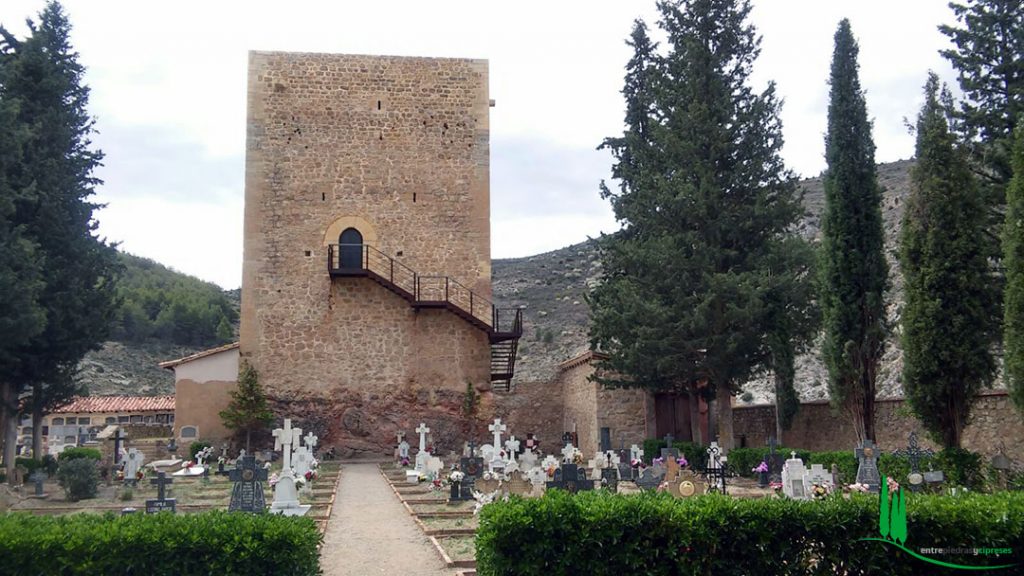
Like the beautiful town of Teruel that it serves, this cemetery also houses a great beauty. Entering it gives the sensation of being in a garden, such is the presence of vegetation. In addition, it has stunning views of the mountains that you will not want to miss. As you walk through it, you will surely notice its peculiar construction, which has had to adapt to the slope on which it is located, so it is built on terraces that bridge the slope.
But the cemetery of Albarracín not only offers beauty, but also history. Because the tower that presides over it speaks of the Muslim presence in the area. It is known as Torre Blanca or Torre de Doña Blanca, and was part of a defensive triangle with the Alcazar and the Torre del Andador.
Cemetery of Alfocea (Zaragoza)
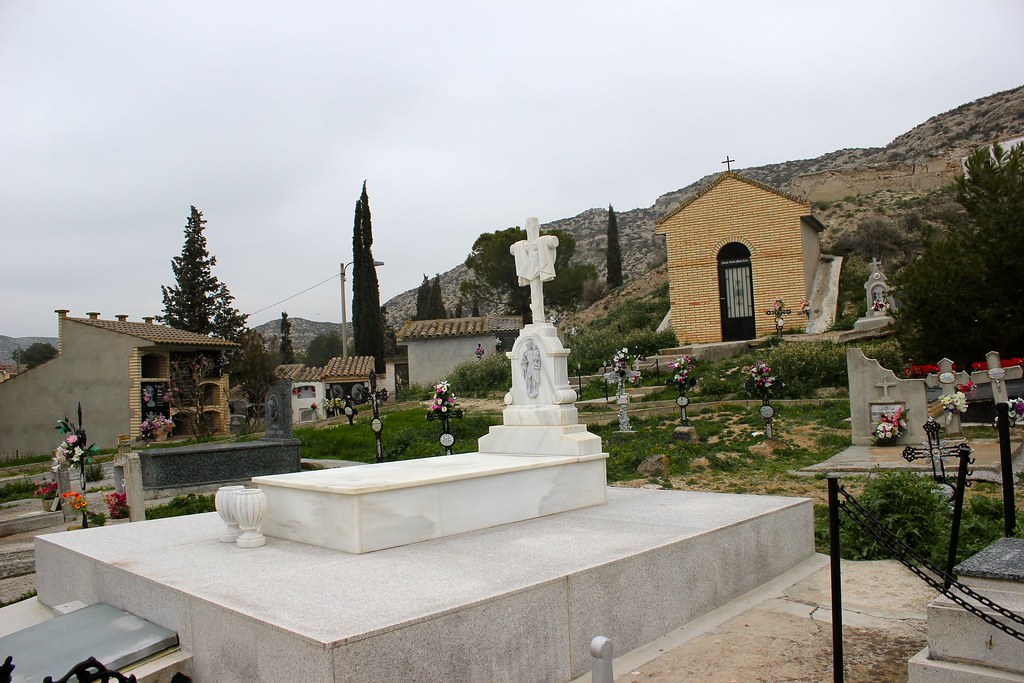
The cemetery of Alfocea is another of the cemeteries of Aragon with great architectural richness, so much so that it is classified as an Asset of Cultural Interest. The reason is that one of its walls was built next to the castle of the town, of which only remains remain. The vision of how some of the fortifications have been used to convert them into niches is really impressive, in addition, the different burials of the place show the different traditions of funerary art that have been happening throughout the history of Alfocea.
If you have remained with desire to know more popular burials of Aragon, we propose to know the Museum of the Mummies of Quinto de Ebro, where a set of 15 mummified bodies are shown in a natural way, exposed where they were buried and exhumed.
Translated with www.DeepL.com/Translator (free version)















